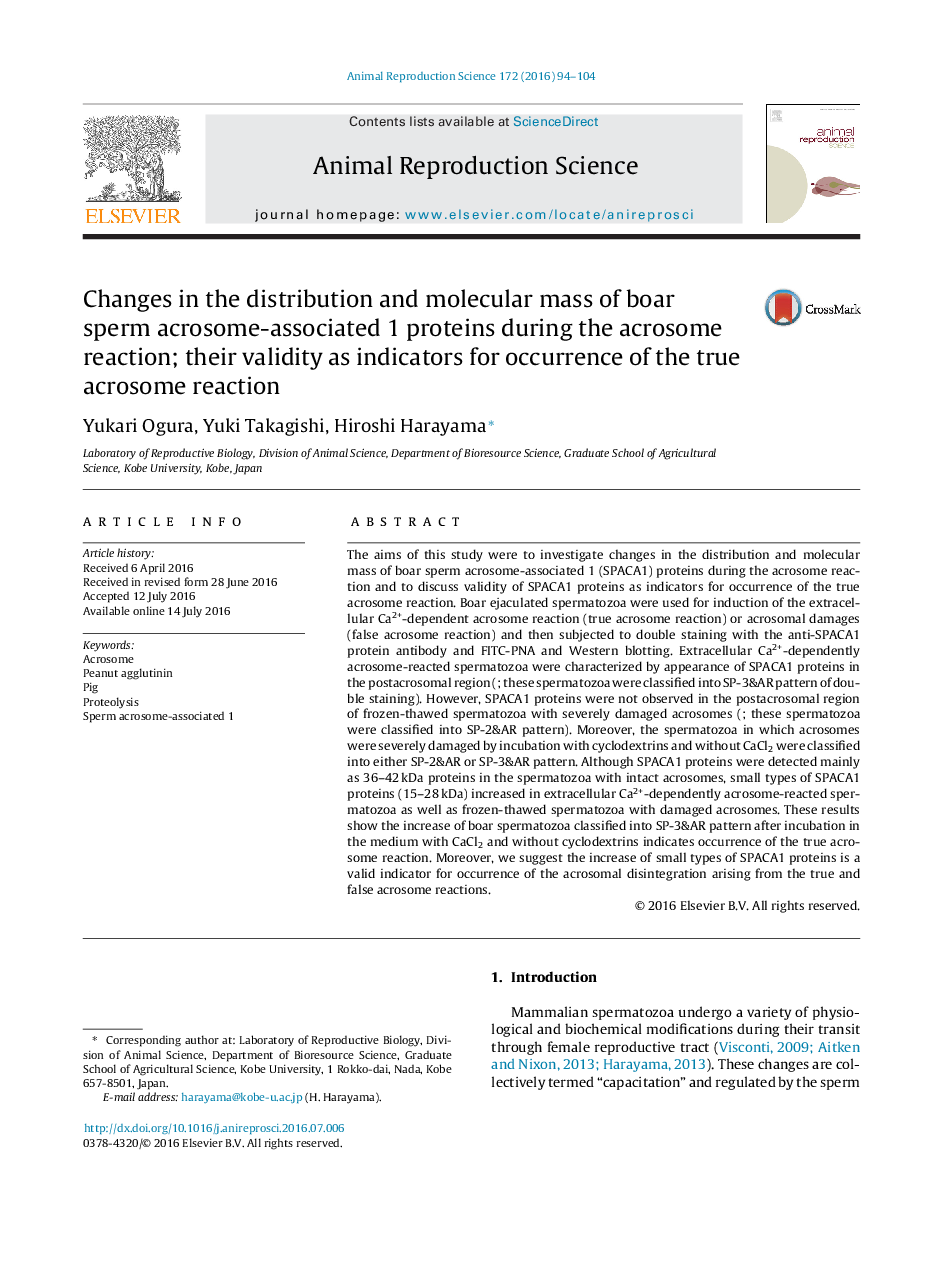| Article ID | Journal | Published Year | Pages | File Type |
|---|---|---|---|---|
| 2072428 | Animal Reproduction Science | 2016 | 11 Pages |
•SPACA1 appeared in the postacrosomal region of boar acrosome-reacted sperm.•It did not appear in the same region of frozen-thawed sperm with damaged acrosomes.•Such appearance of SPACA1 was linked to occurrence of the true acrosome reaction.•SPACA1 was proteolyzed in acrosome-reacted sperm as well as frozen-thawed sperm.
The aims of this study were to investigate changes in the distribution and molecular mass of boar sperm acrosome-associated 1 (SPACA1) proteins during the acrosome reaction and to discuss validity of SPACA1 proteins as indicators for occurrence of the true acrosome reaction. Boar ejaculated spermatozoa were used for induction of the extracellular Ca2+-dependent acrosome reaction (true acrosome reaction) or acrosomal damages (false acrosome reaction) and then subjected to double staining with the anti-SPACA1 protein antibody and FITC-PNA and Western blotting. Extracellular Ca2+-dependently acrosome-reacted spermatozoa were characterized by appearance of SPACA1 proteins in the postacrosomal region (; these spermatozoa were classified into SP-3&AR pattern of double staining). However, SPACA1 proteins were not observed in the postacrosomal region of frozen-thawed spermatozoa with severely damaged acrosomes (; these spermatozoa were classified into SP-2&AR pattern). Moreover, the spermatozoa in which acrosomes were severely damaged by incubation with cyclodextrins and without CaCl2 were classified into either SP-2&AR or SP-3&AR pattern. Although SPACA1 proteins were detected mainly as 36–42 kDa proteins in the spermatozoa with intact acrosomes, small types of SPACA1 proteins (15–28 kDa) increased in extracellular Ca2+-dependently acrosome-reacted spermatozoa as well as frozen-thawed spermatozoa with damaged acrosomes. These results show the increase of boar spermatozoa classified into SP-3&AR pattern after incubation in the medium with CaCl2 and without cyclodextrins indicates occurrence of the true acrosome reaction. Moreover, we suggest the increase of small types of SPACA1 proteins is a valid indicator for occurrence of the acrosomal disintegration arising from the true and false acrosome reactions.
